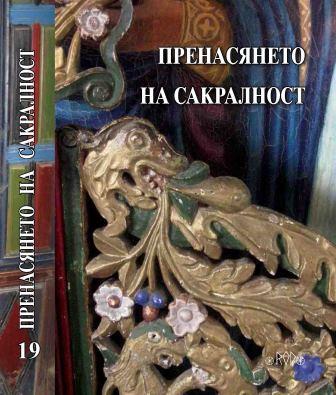ЗМЕЙ − ДРАКОН ПО АРХЕОЛОГИЧЕСКИ И ЕТНОГРАФСКИ ДАННИ
SERPENT − DRAGON IN THE ARCHAEOLOGICAL AND ETHNOGRAPHIC RECORDS
Author(s): Philip PetrunovSubject(s): History, Anthropology, Social Sciences, Archaeology, Cultural history, Customs / Folklore, Oral history, Ancient World, Cultural Anthropology / Ethnology, Culture and social structure
Published by: Асоциация за антропология, етнология и фолклористика ОНГЬЛ
Keywords: Dragon; Holy Roman Emperor; Constantinople; Marble city – Lyutitsa; Bulgaria; Latins; bulgarian folklore; Bible; 13th century; Seven-headed Serpent;
Summary/Abstract: The idea of the Serpent or Dragon, and the reptiles with mythological dimensions take a special place in the Bulgarian folklore. The songs, the stories and the legends related to the demonic power of the extra-mundane creatures with inhuman power, wings and four legs are widespread. In addition to their supernatural powers, they possess very often human traits: they eat, drink and steal maidens. These fairy tales, which were created to “scare the children”, many times has a historical background. The image of the extraordinary “Seven-Headed Serpent/Dragon” and its output date back to the 19th century. The mythical creature is represented by a massive scaly body with two legs in a sitting position. An archaeological artifact found in 2014 from the “Marble City – Lyutitsa” 463 – a luxury bronze spur with gilded and glass paste, on which are depicted Seven-Headed Serpent sheds new light on our understanding of those monuments. In between the ruins of Lyutitsa were discovered silver coins of the Latin nobles, who devastated the Bulgarian lands by the end of the 13th century. Some of them are direct descendants of Otto IV, Holy Roman Emperor who ruled Constantinople between 1209–1215. As those nobles were bearer of destruction and death, the image of the “Seven-Headed Serpent/Dragon” with crowns depict the notion of Western aristocrats. Whether or not the social memory connected to the Latins and their devastations were transformed in such a direct way and if it was so semantically enriched through the epochs? It is a question we have to pay more attention in the future researches.
Journal: Годишник на Асоциация за антропология, етнология и фолклористика »Онгъл«
- Issue Year: 2021
- Issue No: 19
- Page Range: 455-463
- Page Count: 9
- Language: Bulgarian
- Content File-PDF

